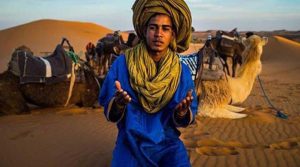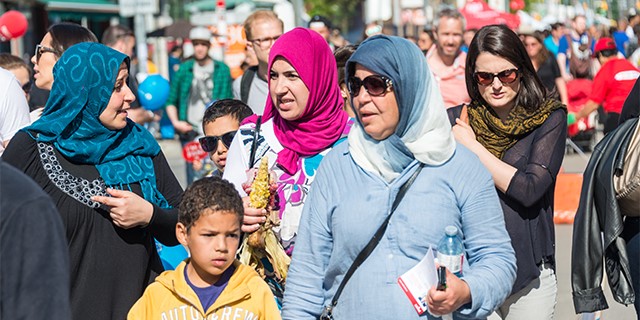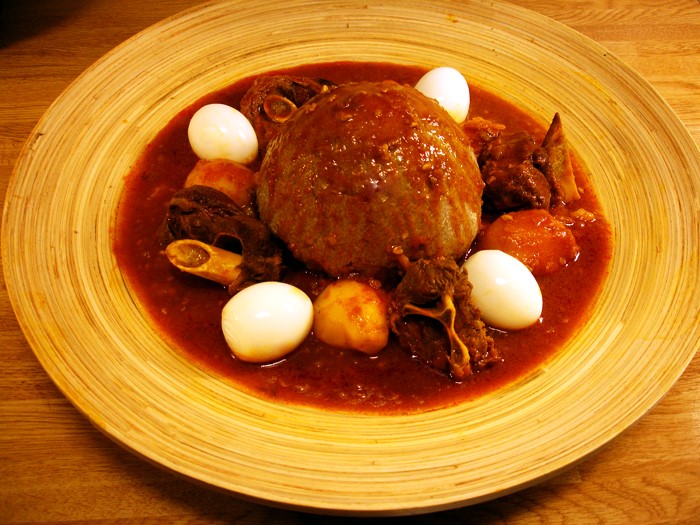
North Africa has a rich cultural heritage and diverse communication practices. Understanding the various aspects of North African communication is crucial in appreciating its contributions to cultural diversity. This article explores the basics of North African communication, its influence on cultural diversity, its intersection with social norms, and its global implications.
Understanding the Basics of North African Communication
Language is a vital component of North African culture. It serves as a means of communication and embodies cultural identity. In North Africa, multiple languages are spoken, including Arabic, Tamazight, and French. Each language reflects the history, traditions, and values of different ethnic groups within the region.
Arabic, the most widely spoken language in North Africa, has deep historical roots and is considered the language of the Quran. It is the official language of Morocco, Algeria, Tunisia, Libya, and Egypt. Arabic dialects vary across the region, with each country having unique linguistic features.
Tamazight, also known as Berber, is another significant language spoken by the indigenous Berber communities in North Africa. It has a rich oral tradition and has been preserved through generations. French, a legacy of the colonial era, is widely spoken and used in government, education, and business sectors.
Non-verbal communication also plays a significant role in North African societies. Gestures, facial expressions, and body language convey meaning and emotions. For instance, direct eye contact is seen as a sign of respect in many North African cultures, while certain gestures may have different interpretations than in other parts of the world.
In addition to verbal and non-verbal communication, other aspects contribute to the complexity of North African communication. One such aspect is the concept of “inshAllah,” which means “if God wills it” in Arabic. This phrase is commonly used in conversations to express the belief that everything happens according to God’s plan. It reflects the importance of spirituality and faith in North African societies.
Another exciting aspect of North African communication is using proverbs and sayings. These traditional expressions are deeply rooted in the cultural heritage and often convey wisdom, advice, or moral lessons. For example, an Arabic proverb states, “The one who knows the road does not fear the distance.” This proverb emphasises the value of knowledge and experience in overcoming challenges.
Furthermore, storytelling is an integral part of North African communication. Folktales, legends, and myths are passed down through generations, serving as a means of entertainment, education, and cultural preservation. These stories often contain moral lessons and historical events and reflect the values and beliefs of the community.
North African communication is also influenced by the concept of “honor” or “Sharaf.” Honor is highly valued in these societies and is associated with dignity, respect, and reputation. It affects interpersonal relationships, decision-making processes, and social interactions. Maintaining one’s honor and their family’s honour is of utmost importance.
North African communication is a rich tapestry of languages, gestures, cultural expressions, and traditional practices. It reflects the diversity and complexity of the region, highlighting the importance of language, non-verbal cues, spirituality, proverbs, storytelling, and the concept of honor. Understanding these basics is crucial for effective communication and building meaningful connections in North African societies.
The Influence of North African Communication on Cultural Diversity
North African storytelling traditions hold a profound influence on cultural diversity. The region’s diverse communities preserve their heritage and values through oral narratives, legends, and folktales. These storytelling traditions entertain, educate, and transmit important social and moral messages from generation to generation.
One example of the rich storytelling tradition in North Africa is the ancient art of hikayat, which refers to the traditional storytelling performed by skilled storytellers known as hakawatis. These hakawatis captivate audiences with their vivid storytelling techniques, using gestures, facial expressions, and voice modulation to bring the tales to life. Each story is carefully crafted to reflect the community’s cultural values and beliefs, providing a window into the diverse tapestry of North African cultures.
Moreover, the influence of North African storytelling extends beyond the region’s borders. As these stories travel through time and space, they contribute to global cultural diversity. These narratives find new audiences through translations and adaptations and continue to inspire and captivate people from different backgrounds.
Furthermore, language is closely intertwined with cultural identity in North Africa. It enables individuals to express their unique history, traditions, and beliefs. The linguistic diversity present in the region creates a rich tapestry of cultural expressions and enhances global cultural diversity.
North Africa has many languages, including Arabic, Amazigh, French, and various dialects. Each language carries its cultural nuances and reflects the historical interactions and influences that have shaped the region. For example, Arabic, as the dominant language, serves as a unifying force among the diverse communities, while Amazigh languages highlight the indigenous heritage of the Berber people.
Moreover, the linguistic diversity in North Africa has contributed to the development of unique forms of expression, such as poetry, music, and literature. These art forms provide a platform for creative expression and serve to preserve cultural heritage. Through poetry, for instance, individuals can convey their emotions, tell stories, and celebrate their cultural identity.
In addition to language, North African communication is influenced by other forms of expression, such as calligraphy and visual arts. With intricate designs and stylised writing, calligraphy has long been used to convey religious and cultural messages. The intricate patterns and motifs in North African visual arts, such as mosaics and pottery, reflect the region’s diverse cultural influences, including Arab, Berber, and Mediterranean aesthetics.

The Intersection of Communication and Social Norms in North Africa
Gender dynamics shape communication practices in North Africa. While societal expectations and norms vary across countries and communities, men and women often have distinct communication roles and styles. Gender equality movements in the region seek to challenge traditional norms and create more inclusive communication spaces.
Religion also influences communication styles in North Africa. Islam, the predominant religion, emphasizes respect, humility, and politeness. These values shape the way individuals communicate, fostering a sense of harmony and social cohesion. Understanding the influence of religion on communication is crucial in promoting intercultural dialogue and understanding.
In North Africa, gender roles play a significant role in shaping communication practices. Traditional expectations often dictate that men take on more assertive and dominant communication styles while women are expected to be more passive and nurturing. This dichotomy is deeply rooted in cultural and historical contexts, where men have traditionally held positions of power and authority.
However, in recent years, there has been a growing movement towards gender equality in North Africa. Women increasingly challenge these traditional norms and assert their voices in various spheres, including communication. This shift has led to a more diverse and inclusive communication landscape where women actively participate in public discourse and decision-making.
Religion, particularly Islam, also plays a significant role in shaping communication practices in North Africa. Islamic teachings emphasize the importance of respect, humility, and politeness in interpersonal interactions. These values are deeply ingrained in the region’s social fabric and influence individuals’ communication.
For example, in North African societies, greeting others with warmth and hospitality is common, often accompanied by multiple exchanges of pleasantries. This emphasis on politeness and respect creates a harmonious atmosphere and fosters positive relationships among community members.
Furthermore, Islamic teachings encourage individuals to listen attentively and patiently during conversations, allowing others to express their thoughts and opinions fully. This practice promotes active and empathetic communication, where individuals genuinely seek to understand and engage with one another’s perspectives.
Understanding the influence of religion on communication in North Africa is crucial for promoting intercultural dialogue and understanding. Individuals can bridge cultural gaps and foster meaningful connections by recognizing and respecting the communication styles shaped by religious values.
Moreover, the intersection of gender dynamics and religious influences in communication practices adds another complexity to the North African context. Women who challenge traditional gender roles may face resistance or backlash, particularly when their actions contradict societal expectations influenced by religion.
However, the ongoing gender equality movements in North Africa are working towards creating more inclusive communication spaces where individuals of all genders can freely express themselves and engage in dialogue. These movements aim to dismantle barriers restricting women’s voices and promote a more egalitarian society.
The Global Implications of North African Communication
The North African diaspora has led to the spread of communication practices globally. As individuals from the region migrate and settle in different parts of the world, they bring their cultural traditions and communication styles. This interchange of ideas and practices enriches global cultural diversity and fosters cross-cultural understanding.
Moreover, North African communication plays a significant role in global discourse. The region’s diverse perspectives and experiences contribute to international migration, identity, and social justice discussions. Engaging with North African communication enhances global dialogue, promoting a more inclusive and interconnected world.
Conclusion
Exploring North African communication and its contribution to cultural diversity provides valuable insights into the region’s rich tapestry of traditions, languages, and social norms. From the role of language and non-verbal communication to the impact on cultural diversity and global implications, understanding North African communication fosters appreciation for the diverse perspectives and experiences that shape our world.



